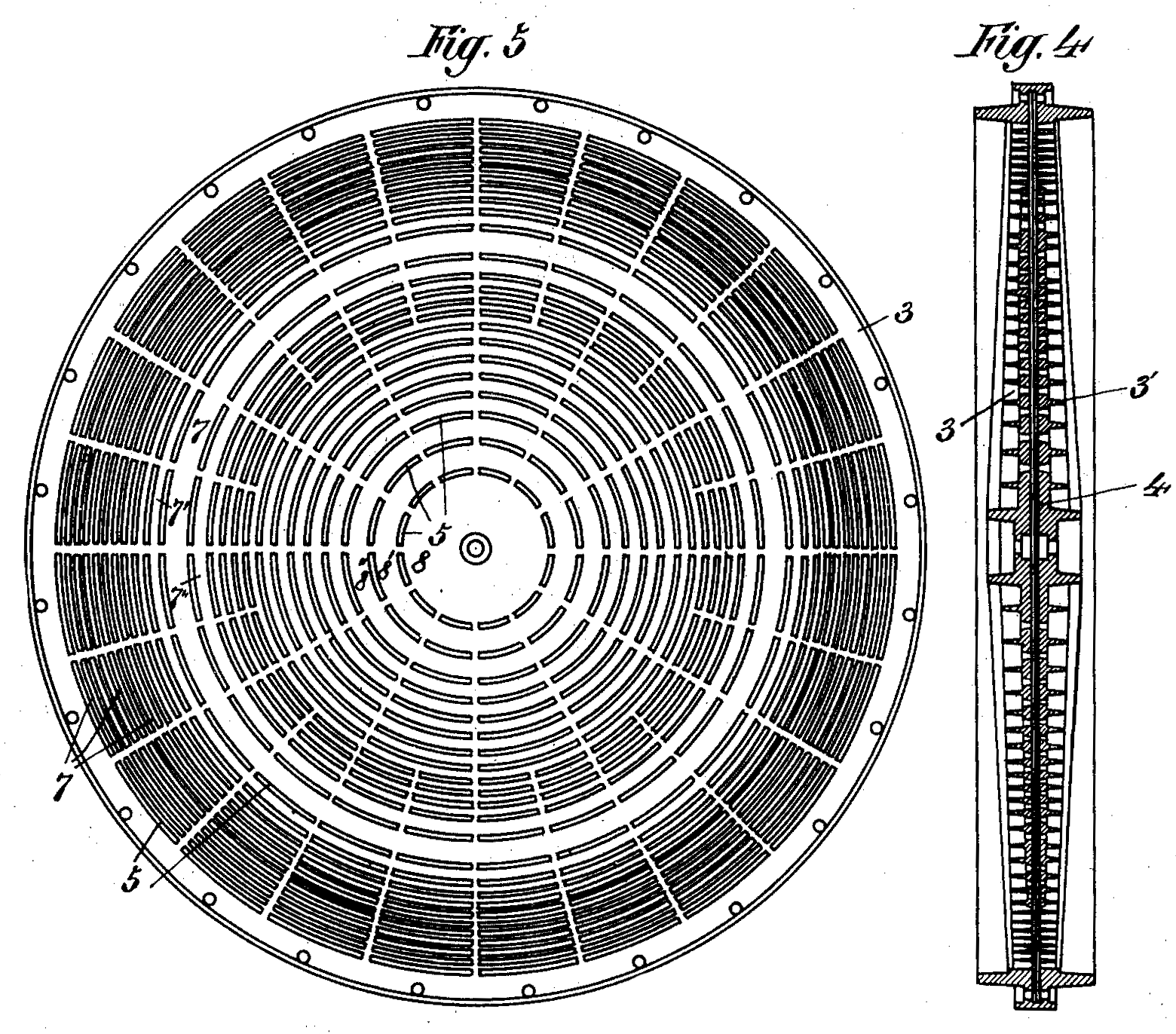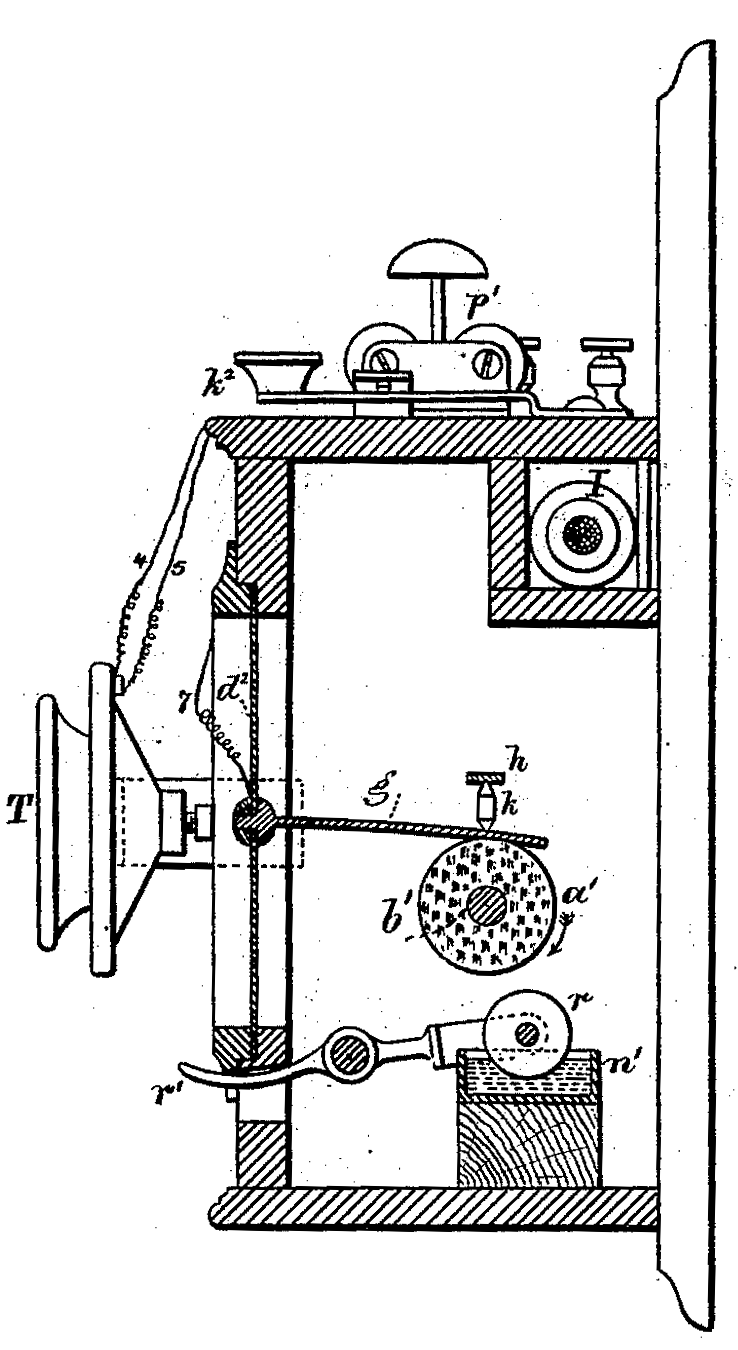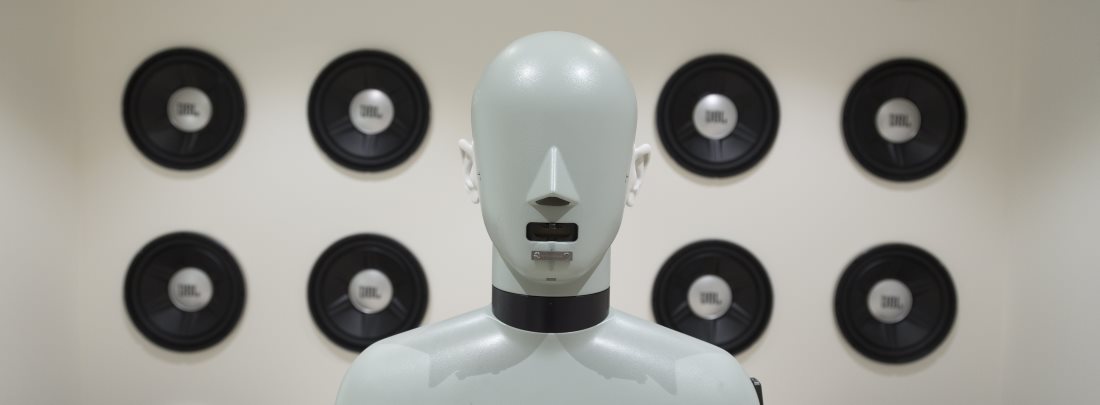The invention of the telephone set off a wave of creativity, and almost all conceivable transducer mechanisms were tried out in the 1870s and 80s. Some of them developed into usable devices, others serve mainly as illustrations of man’s creativity. In this part, some of them will be presented, ranging from useful, mainstream designs to the downright bizarre.
Electrostatic loudspeakers
It was discovered in the 18th century that when a Leyden jar was discharged, the jar itself generated a clicking sound due to the release of the electrostatic stress. A similar phenomenon was observed by Lord Kelvin in 1863 for flat-plate condensers.
Not much was done with electrostatic transduction until Edison and Dolbear designed complete telephone systems using electrostatic transducers for both transmitter and receiver, Dolbear gave a public demonstration of his system in 1881. But the high electrical impedance of the transducers was not well suited for telephone work, and the principle would not reappear until much later, when amplification was available.

An early example of the electrostatic loudspeaker can be found in British patent no. 206601 by N. W. McLachlan, filed in 1922. Another early example is the circular stretched membrane electrostatic loudspeaker invented by Hans Vogt in Germany, which was used in early German sound film equipment.
In the late 1940s, Arthur Janszen patented an electrostatic loudspeaker, and various models are still produced by his company.
Edward Kellogg at General Electric patented an electrostatic loudspeaker in 1929 where the diaphragm was divided into several partitions separated by delay lines. This principle was again taken up by Peter Walker in his Quad ESL in 1957, which is the first really successful commercial electrostatic speaker.
Piezoelectric transducers
The early history of piezoelectric transducers was covered in Part 3 of this series. The principle has mainly been used for underwater transducers, microphones and cheap phono cartridges. For loudspeakers, the main problem has been to couple the high mechanical impedance crystal to the low impedance of air. One of the pioneers of piezoelectric transducers, A. M. Nicolson, demonstrated loudspeakers based in Rochelle salt in 1919, but the principle did not become popular until the 1970s, when Motorola launched their piezoelectric tweeters.
Armature transducers
The armature transducer is based on the principle of an electromagnet attracting a ferromagnetic object, for instance an iron diaphragm. Since the diaphragm will be unidirectionally attracted regardless of the polarity of the current, distortion is high unless a bias of some sort, either a bias current or a permanent magnet, is used. Distortion is also introduced due to the fact that the attraction force increases as the distance between the diaphragm and the poles of the electromagnet is reduced. Capps, in US patent 441396 (filed 1890), describes a balanced armature device, as does Egerton in US patent 1365898 (filed 1918).

In the balanced armature mechanism two magnet gaps are provided; this gives a symmetrical drive that reduces second harmonic distortion, and the linear range is increased.
Egerton’s drive mechanism was adapted by Wegel for use in the Western Electric 540AW loudspeaker, a loudspeaker that used two large cones cemented together after a design by Ricker (US patent 1859892). This loudspeaker was so good that its availability well may have slowed the development of other principles.
The balanced armature mechanism was abandoned for loudspeaker use in the late 1920s, but it is still in use for earphones and hearing aids, where the small maximum displacement limit and the high mechanical impedance are not significant limitations to the performance.
The termophone
In 1898, Ferdinand Braun discovered that sound could be generated by the thermal expansion and contraction of the layer of air in contact with a metallic foil so thin that its temperature would follow the current through it. The sound level was minute, but the great advantage was that the sound pressure it produced could be accurately calculated from the physical constants of the device. Arnold and Crandall at the Western Electric Research Department used this for absolute calibration of microphones, and as a sound source in hearing tests.
Air stream modulation
Modulation of compressed air has been used both as amplification of sound in gramophones, for noise generation, and as loudspeakers. Douglas Self has an interesting web page about the Auxetophone, the compressed air gramophone.
Compressed-air amplification can be used to generate intense sound levels. One example is a compressed-air loudspeaker designed by John K. Hilliard at the LTV Research Center in 1965, which could radiate several kilowatts of acoustic (not electric!) power. The sound was above the ambient noise level at a 10 miles distance in the 30-60Hz range.
The problem with all such loudspeakers is the air noise: the noise of Hilliard’s device was only 30 dB below 100 % modulation
Friction operated loudspeakers
Two friction operated loudspeakers have appeared, but the principle never seems to have been used much in practice.

The first is Edison’s Electromotograph, originally an invention delivered on request to circumvent patents on the ordinary telegraph relay. It consists of a rotating chalk cylinder with a metal friction band in contact with part of the surface. When an electric potential is applied between the cylinder and the band, the friction decreases, and the resulting change in force can be used to actuate relay contacts, or a loudspeaker diaphragm.
Alfred Johnsen and Knud Rahbek in Denmark also developed a similar device, but based on a quite different principle: electroadhesion. If the cylinder is made of a semiconducting material, like lithographic stone wetted with an electrolyte, an electric potential between the cylinder and the band increases the friction. As with Edison’s Electromotograph, it can be used as a loudspeaker actuating mechanism.
Body tissue transducer
I will end this part with the description of a transducer invented in 1874 by Elisha Gray. Gray found that a musical note could be heard when the ear is placed near the chest of arm of a person, and the intermittent current from an induction coil is passed through the person’s body. He also found that sound could be produced if an intermittent current was passed between a metal surface and for instance a finger that was drawn lightly across the surface. One cannot imagine that someone would try to exploit this commercially; nevertheless Gray patented the discovery as British patent no. 2646 (1874), issued in the name of his representative, J. H. Johnson.
All images from published patents




